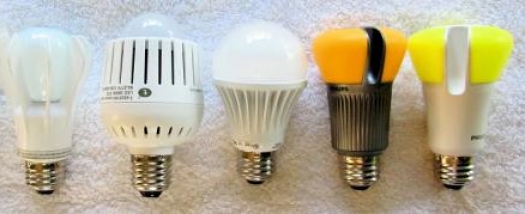India: Let there be LED light

Is the Government of India's ambition to supply a $0.65 LED bulb to the masses feasible, asks Compound Semiconductor.
Image: Government procures LED bulbs and then provides them to consumers at a lower price [Geoffrey Landis]
In January 2015, the Government of India unveiled an ambitious programme to thrust LED bulbs into the limelight by offering the energy effcient devices at a fraction of the market price.
Spearheaded by Energy Efficiency Services Limited, a joint venture of state-run power companies, the scheme has already flooded the nation's homes with millions of cheap 60W-equivalent LED bulbs. And more is to come.
As part of a competitive bidding process, EESL procures millions of LED bulbs from manufacturers and then sells the devices to households at a reduced price through power distribution companies. These companies then repay EESL the difference from the savings accrued from the use of more efficient lighting.
And to date, the scheme has met with resounding success. Just months after starting, some ten million bulbs were installed across the nation, and today this figure has reached 54.2 million units.
Come Spring, the government intends to hit a 100 million LED bulb installation target, with a view to totally wiping out each and every one of the nation's hundreds of millions incandescent bulbs by 2018. Indeed, The Times of India recently reported how vans are being dispatched to the nation's more remote regions, to promote LED bulb use.
Price-wise, the scheme has reached unprecedented depths. Following its first bidding round, EESL procured some 0.75 million LED bulbs that were then sold for around $4.50.
But in the latest round of June last year, 50 million bulbs were procured with prices bottoming out at $1.10 per unit - dipping well below the government's $1.50 per unit target. And EESL is now intent on pushing the price down to a mere $0.65.
But is a $0.65 LED bulb realistic? For Bangalore-based IHS lighting and LED analyst, Swapna Prakash, the answer is yes.
As he points out: "Since the first bidding process of January 2014 we have seen a decrease in price of around 75% and I am certain we will continue to see this."
According to Prakash, India is a net importer of energy and government's basic objective right now is to save energy. Clearly replacing all incandescent light bulbs with LED bulbs by 2018 is once clear route to doing so.
"Our LED bulb market is very price sensitive and from the outset we never realised the government would take so many approaches to procure LED bulbs," he says. "Two years ago consumers would pay around $10 for a single LED bulb but we've been seeing continuous decreases in prices and realistically we will see this $0.65 goal being achieved within the next couple of biddings."
And with the next bidding round expected to take place by the end of this year, this goal could be reached as early as 2017. But where exactly are EESL's LED bulbs coming from?
According to Prakash, LED bulb players from around the world enter EESL's competitive bidding process, from Western-based businesses Philips and Osram to home-grown firms including industry heavyweights Crompton Greaves, Mumbai, Havells of Uttar Pradesh, Mumbai-based Bajaj Electricals and Wipro of Bangalore.
Recently Philips, Havells, and Surya Roshni of Delhi have all ramped up production to keep pace with the government programme.
Meanwhile Orient Electric, India, has vacated incandescent bulb manufacture and shifted half of its assembly lines from compact fluorescent lamps to LEDs. The New Delhi-based lighting manufacturer also recently launched its own campaign urging Indian households to switch to LED lighting.
"Manufacturers from China and Taiwan have huge economies of scale and to compete many India-based companies and other foreign chip makers will have to increase economies of scale to achieve the necessary reductions in cost," highlights Prakash. "The selling price is still coming down."
Performance matters
Crucially, Prakash asserts the LED bulbs bought through the EESL scheme are not only cheap but also perform.
"Consumers are certainly concerned by performance and EESL sets quality benchmarks to make sure there is no compromise in standards," he says. "[The organisation] has set technical standards for self-ballasted 7W LED lamps for domestic use and all bidders provide a three year replacement warranty certificate for every batch of bulbs."
"Bidders also submit test certificates from certified labs for the parameters set by EESL," he adds. "And in most cases the lumen intensity and brightness is better than a 60W incandescent lamp."
So, with the next bidding round due within months, industry can only wait to see what price the next wave of EESL-procured LED bulbs come in at. In the meantime, the organisation is also promoting the retrofitting and maintenance of LED street lighting.
And in a new move, EESL recently clinched a deal with India's massive online marketplace, Snapdeal, to distribute 9W LED bulbs at $1.50.
As Prakash says: "Snapdeal has a huge online presence in India and this deal will enable the Ministry of Power to further increase its distribution of LED bulbs and help to realise its goal of an energy efficient India."


































